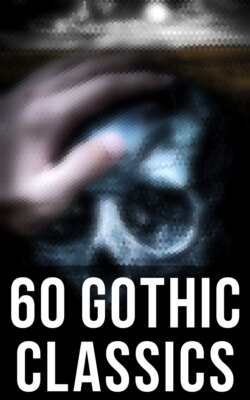Читать книгу 60 Gothic Classics - Эдгар Аллан По, Эмили Бронте - Страница 16
На сайте Литреса книга снята с продажи.
William Beckford
ОглавлениеWilliam Beckford was born at Fonthill on 29 September, 1759. He was educated by a private tutor and grew up with many of the qualities of his own caliph Vathek. He received musical instruction under Mozart. Chatham pronounced him “all fire and air,” and warned him against reading The Arabian Nights. At seventeen he wrote an elaborate mystification, Memoirs of Extraordinary Painters, a satire on the biographies in the Vies des Peintres Flamands. His mother disliking English universities, he went to complete his education at Geneva, where he remained for a year and a half. From 1780-2 he travelled in the Low Countries and Italy. An account of these travels was published anonymously in 1783 as Dreams, Waking Thoughts, and Incidents, in a series of letters from various parts of Europe. The work was almost immediately destroyed with the exception of six copies. At one time a legend existed that he wrote Vathek in three days and two nights at a single sitting! This feat has since been disproved by the publication of the author’s own correspondence. At any rate, the book was written between 1781-2 in French, and the English version, made by the Rev. Henley, was published surreptitiously by that gentleman as a translation from the Arabic in 1784. In protest, Beckford published the original, long before he had intended, at Paris and Lausanne, in 1787. In 1783 he had married Lady Margaret Gordon, the daughter of the Earl of Aboyne, and lived with her in Switzerland until her death three years later. He had two daughters by her. In 1787 he visited Portugal, and his Portuguese letters are the most valuable he ever wrote. At Lausanne he bought Gibbon’s library and shut himself up to read it. He was elected M.P. for Wells (1784-90) and Hindon (1790-4), to which seat he was re-elected in 1806. But during this time he had become more and more absorbed in collecting. He wrote two burlesques on the sentimental novels of his time, The Elegant Enthusiast (1796) and Azemia (1797). But he had already settled down at Fonthill and was giving himself up to all kinds of artistic and architectural extravagances. With his enormous wealth he was able to rebuild the old family mansion on a grand scale, pull it down and rebuild it again yet more sumptuously on a different site. But unfortunately a tower, three hundred feet high, he had erected fell from the very haste of its construction. It was succeeded by another which, later, also fell down. Beckford now shut himself up in his palace with a physician, a majordomo, and a French abbé, and in this seclusion he spent twenty years, still collecting books and works of art. His expenditure for sixteen years is stated by himself to be upwards of a quarter of a million. In 1822 he was forced to dispose of Fonthill and the greater part of the contents, the sale of which lasted thirty-seven days. When the public were admitted, Hazlitt described Fonthill as “a desert of magnificence, a glittering waste of laborious idleness, a cathedral turned into a toyshop....” After the sale Beckford removed to Bath where he created a miniature Fonthill. He died there on 2 May, 1844, his face showing scarcely a trace of age.
